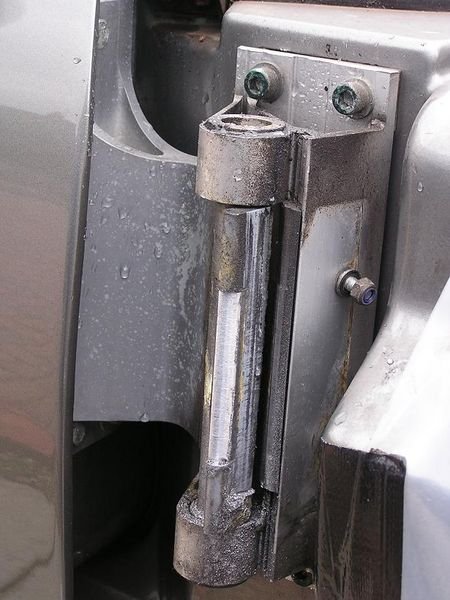
When it comes to door hinges, they are often overlooked as just simple metal parts. But think about how many times you use them daily. A good hinge can last for years, but wear and tear is inevitable. Identifying issues early can save you time, money, and the frustration of dealing with a door that won’t cooperate. Let’s get into the details of spotting these worn bearings and what you can do about it.
Understanding Door Hinge Bearings
Door hinge bearings help the hinge operate smoothly. When you open or close a door, the bearing reduces friction and allows smooth movement. Over time, due to regular use, the materials inside the hinge can wear out. This wear can lead to increased friction, making it harder for the door to open and close. Imagine trying to slide a book across a table covered in sandpaper—that’s what your door experiences with worn bearings.
There are two main types of door hinges: butt hinges and piano hinges. Butt hinges are the most common and are typically found on residential doors, while piano hinges run the entire length of a door and are often used on cabinets. Each type has bearings that can wear out, so understanding your hinge type is crucial in identifying any issues.
Signs of a Worn Door Hinge Bearing
You might be wondering what to look for when checking your door hinges. Here are the most common signs that indicate a worn door hinge bearing:
- Squeaking noise: If your door starts to squeak when opened or closed, that’s often the first sign. It means the lubricant inside the hinge has worn away.
- Resistance: Notice if the door feels heavy to open or close. This resistance suggests the bearings aren’t functioning properly.
- Visible damage: Check for rust, dirt, or other debris around the hinge. Accumulation of particles can cause wear and make the hinge stiff.
If you notice these signs, the bearings might be worn out, and it’s time to take a closer look.
Checking for Wear and Tear
Now, let’s get hands-on with the inspection process. Start by opening the door fully and examining the hinges closely. Here’s how to do it:
1. Look at the hinge pin: The pin should move freely; if it’s stuck or hard to pull out, that’s a clear sign of wear.
2. Wiggle the door: Gently move the door back and forth. If you hear a grinding noise or feel unusual movement, the bearings might be worn out.
3. Inspect visually: Look for gaps between the hinge parts. If you notice any unevenness or if the hinge doesn’t sit flush, it could indicate wear.
Doing this check regularly will help you catch issues before they turn into more significant problems.
Fixing Worn Door Hinge Bearings
If you’ve confirmed that your door hinge bearings are indeed worn out, don’t worry—there are steps you can take to fix them. Here’s a simple guide to get you started:
1. Lubrication: Sometimes, a good lube job is all you need. Use a silicone spray or WD-40 to help reduce friction. Just spray it onto the hinge and work it in by opening and closing the door a few times.
2. Replace the hinge pin: If lubrication doesn’t help, consider replacing the hinge pin. Often, this small part can cause big issues. Remove the old pin carefully and insert a new one.
3. Consider new hinges: If the hinges are heavily worn or damaged, you might need to replace the entire hinge. It’s a simple task and can make a world of difference in how your door functions.
If you’re not comfortable doing this yourself, don’t hesitate to call a handyman. Sometimes, it’s best to bring in a pro.
Preventative Measures for Longevity
After you’ve taken care of your current issue, it’s a good idea to think about preventing future wear on your door hinges. Here are some tips:
- Regular maintenance: Check your hinges every few months. A little lubrication every now and then can go a long way.
- Avoid slamming: Teach family members or roommates to treat doors gently. Slamming can cause damage over time.
- Environmental factors: Keep an eye on humidity levels. High humidity can cause rust and corrosion, speeding up wear.
These simple steps can help extend the life of your door hinges and keep them functioning smoothly.
Identifying a worn door hinge bearing doesn’t have to be daunting. By looking for signs like squeaking noises and resistance when opening the door, you can pinpoint issues early. Regular maintenance and attention can keep your door operating smoothly for years to come.
Remember, a little effort in checking and maintaining your hinges can save you from more significant problems down the road. So, next time you hear that annoying squeak, you’ll know exactly what to do! Keeping your doors functioning well is all about understanding and caring for the small parts that make a big difference.
